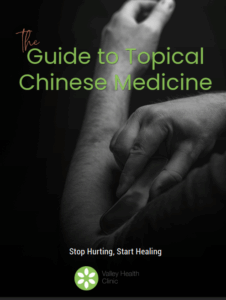Migraines are more than just intense headaches. They can drastically compromise an individual’s quality of life. While many migraine sufferers hope that their triggers can be categorized neatly – such as stress and neck tension, dietary factors, or hormonal fluctuations – the reality often reveals a blend of these triggers. For example, neck tension may worsen due to certain foods or during hormonal shifts.
Migraines are multifaceted, often stemming from various factors. Abnormal brain activity is believed to alter nerve signals, chemicals, and blood vessels in the brain. A significant number of individuals have genetic predispositions to migraines, and generally, these predispositions align with three primary triggers: tension, food, or hormones. Recognizing and understanding these triggers is foundational for effective migraine management.
In this three-part series, we aim to shed light on each trigger category, providing affordable and practical at-home strategies. Though these methods aren’t a universal solution, they can potentially diminish migraine frequency and intensity, transforming them from a weekly menace to a monthly inconvenience.
Stress and Tension Migraines:
The sympathetic nervous system (SNS) plays a significant role in triggering migraines. Those with migraines often exhibit heightened nervous system sensitivity, with their brain’s nerve cells more prone to stimulation. Prolonged SNS activation is thought to be a migraine catalyst, underscoring the value of stress management as a preventive approach.
How It Presents:
Individuals might experience tension in their neck and shoulders, often describing a precursor pain in the neck signaling an impending migraine.
At-Home Treatment Options:
– Breathing Exercises: Engage in deep breathing exercises, focusing on extended exhales and employing shaking movements to relax shoulder tension and promote diaphragmatic activity (Learn More)
– Foot Soaks: These therapeutic interventions can modulate the SNS, potentially counteracting its overactivity and restoring blood circulation, especially if there are signs of vasoconstriction (like cold hands and feet). (Learn More)
– Self-Massage: Concentrate on the occipital muscles to mitigate tension, decreasing the chances of cranial nerve compression and resultant discomfort. (Learn More)
Food-related Migraines:
Emerging evidence supports a connection between gut health and migraines. Migraine sufferers frequently report nausea or vomiting. Contemporary research points to potential gastrointestinal irregularities intensifying or even initiating migraine symptoms, emphasizing the importance of balanced diets and gut health.
How It Presents:
These migraines can appear somewhat unpredictably, often because specific dietary triggers remain unidentified. Accompanying symptoms might include nausea, vomiting, or broader digestive issues.
At-Home Treatment Options:
– Understanding Diet: Recognize that certain foods or imbalances in the gut’s microbial environment can induce inflammation, potentially leading to migraines.
– Supplements and Dietary Changes: Explore options like Gut Harmony (Chorus Capsules) and Ginger other dietary modifications to encourage gut health and microbial equilibrium. (Learn More) The objective isn’t merely to add or remove bacteria with probiotics or antibiotics but to achieve balance, for instance, with herbal formulas like Gut Harmony.
Hormonal Fluctuations:
Hormones, especially in women, can influence migraine patterns. For instance, a drop in estrogen levels might activate migraines, typically observed two days before menstruation or during menopause.
How It Presents:
These migraines are often predictable, usually coinciding with menstrual cycles.
At-Home Treatment Options:
-Chinese Herbs: Ancient remedies like Xiao Yao Wan, a celebrated Chinese herbal blend, have been utilized for ages to balance and adjust hormonal shifts. Xiao Yao Wan is particularly esteemed in traditional Chinese medicine for harmonizing hormones and addressing menstrual discrepancies.
While the aforementioned triggers are among the most common, it’s pivotal to remember that individuals might encounter multiple triggers that synergistically exacerbate their condition.
Although our series strives for a comprehensive outlook, it’s vital to recognize the unique nature of each person’s health landscape. We are committed to delivering useful and actionable knowledge. Still, it remains essential to consult a healthcare professional for personalized guidance and recommendations.
About the Author
Willard Sheppy is a writer and healthcare practitioner who seamlessly melds scientific knowledge with practical applications in engaging and authoritative articles. He holds a Bachelor of Science in Environmental Science from Oregon State University and a Master’s in Acupuncture and Oriental Medicine from the distinguished Oregon College of Oriental Medicine.
In his work, Willard skillfully combines his extensive educational background in scientific research with his practical experience as a healthcare practitioner. Willard balances his life with martial arts and cherished family adventures. As a father of three, he often leads his family on camping and hiking trips along the breathtaking Oregon coast.
Connect with Willard on LinkedIn at linkedin.com/in/valleyhealthclinic or learn more about his services at valleyhealthclinic.com. Embark on this journey towards holistic health with Willard!








